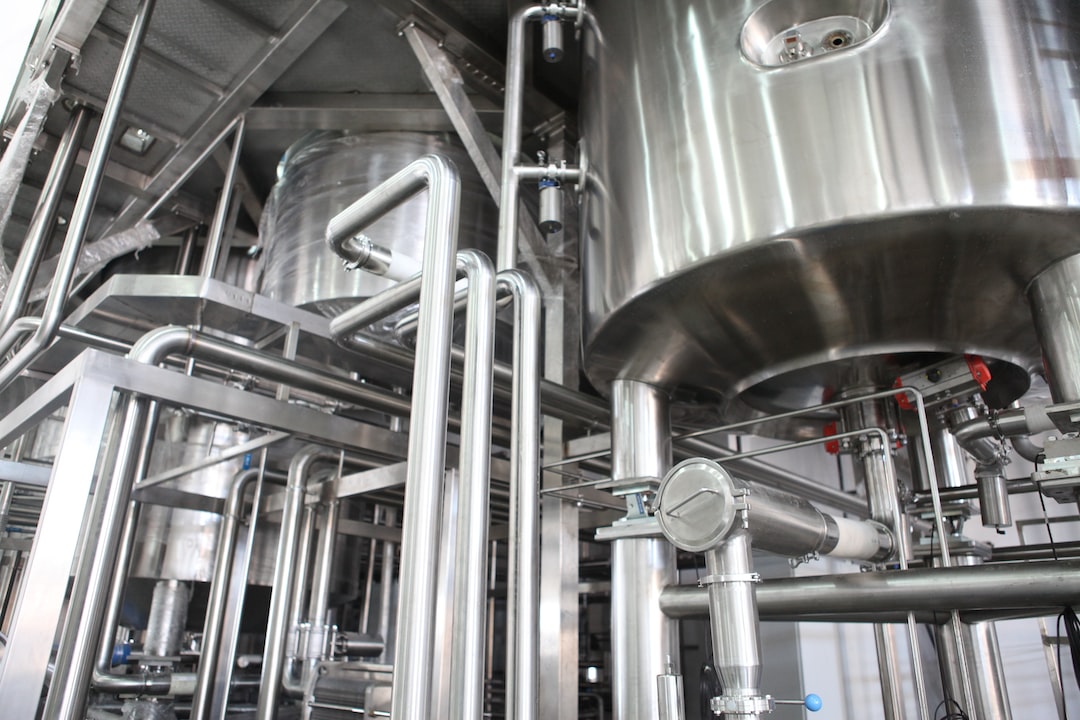Industrial robotic floor cleaning assistants are autonomous machines that are specifically designed to clean and sanitize floors in various workplace settings. These machines use advanced sensors and algorithms to navigate through the workspace, avoiding obstacles and efficiently cleaning the floors. They are equipped with brushes, vacuum systems, and sometimes even mopping capabilities to effectively remove dirt, dust, and debris from the floor surface.
There are several popular models of industrial robotic floor cleaning assistants available in the market today. One example is the Roomba by iRobot, which is a small robotic vacuum cleaner that can be programmed to clean specific areas or entire floors. Another example is the Tennant T7AMR, which is a larger machine that can sweep, scrub, and dry floors in one pass. These machines are designed to be user-friendly and require minimal human intervention.
How Robotic Cleaning Assistants are Revolutionizing Workplace Hygiene Standards
When compared to traditional cleaning methods, robotic cleaning assistants offer several advantages that revolutionize workplace hygiene standards. Firstly, these machines are more efficient and thorough in their cleaning process. They can cover large areas in a shorter amount of time, ensuring that every corner of the workspace is properly cleaned.
Additionally, robotic cleaning assistants eliminate the need for manual labor, reducing the risk of injuries associated with repetitive tasks such as mopping or vacuuming. This not only improves workplace safety but also allows employees to focus on more important tasks, leading to increased productivity.
The Benefits of Using Industrial Robotic Floor Cleaning Assistants in Your Workplace
Implementing industrial robotic floor cleaning assistants in the workplace can bring numerous benefits for both employees and employers. Firstly, these machines contribute to the overall health and well-being of employees. By effectively removing dirt, dust, and allergens from the floor surface, they reduce the risk of respiratory issues and allergies. This leads to a healthier workforce and fewer sick days.
Moreover, the presence of robotic cleaning assistants in the workplace can improve employee morale. A clean and well-maintained environment creates a positive atmosphere and shows that the employer values the well-being of their employees. This can lead to increased job satisfaction and loyalty among employees.
Furthermore, by reducing the time and effort required for manual cleaning, robotic cleaning assistants increase productivity in the workplace. Employees can focus on their core tasks without being interrupted by cleaning duties. This leads to improved efficiency and ultimately, better business outcomes.
How Robotic Cleaning Assistants are Improving Workplace Safety and Health
| Benefits of Industrial Robotic Floor Cleaning Assistants |
|---|
| 1. Increased Efficiency |
| 2. Improved Cleaning Quality |
| 3. Reduced Labor Costs |
| 4. Enhanced Safety |
| 5. Consistent Cleaning Performance |
| 6. Reduced Downtime |
| 7. Increased Productivity |
| 8. Improved Indoor Air Quality |
| 9. Reduced Water and Chemical Usage |
| 10. Improved Sustainability |
One of the key advantages of using robotic cleaning assistants is the reduced risk of accidents in the workplace. Traditional cleaning methods often involve manual labor, which can lead to slips, trips, and falls. With robotic cleaning assistants, there is no need for employees to handle heavy equipment or come into contact with potentially hazardous substances.
Additionally, these machines eliminate the need for using harsh cleaning chemicals that can be harmful to both employees and the environment. Robotic cleaning assistants use water-based solutions or environmentally friendly cleaning agents that are safe for use in any workplace setting. This not only improves employee safety but also contributes to better air quality in the workspace.
The Role of Industrial Robotic Floor Cleaning Assistants in Creating a More Productive Workplace
By reducing downtime for cleaning, industrial robotic floor cleaning assistants play a crucial role in creating a more productive workplace. Traditional cleaning methods often require employees to stop their work and wait for the cleaning process to be completed. This interruption can disrupt workflow and decrease productivity.
With robotic cleaning assistants, the cleaning process can be scheduled during non-working hours or when employees are not present. This ensures that there is no disruption to the workflow and allows employees to focus on their core business activities. As a result, productivity is increased, and business operations run smoothly.
Moreover, the presence of robotic cleaning assistants in the workplace can improve employee satisfaction. A clean and well-maintained environment creates a positive atmosphere that promotes employee well-being and job satisfaction. When employees feel comfortable and valued in their workplace, they are more likely to be engaged and motivated, leading to increased productivity.
How Robotic Cleaning Assistants are Helping Businesses Save Time and Money on Sanitation Costs

Implementing industrial robotic floor cleaning assistants in the workplace can lead to significant cost savings for businesses. Firstly, these machines reduce labor costs associated with manual cleaning. Instead of hiring dedicated cleaning staff or assigning existing employees to cleaning duties, businesses can rely on robotic cleaning assistants to perform the task efficiently and effectively.
Additionally, using robotic cleaning assistants reduces the need for purchasing expensive cleaning supplies such as mops, buckets, and chemicals. These machines are designed to use minimal amounts of water and cleaning agents, resulting in lower supply expenses. Moreover, they are equipped with sensors that ensure optimal usage of resources, further reducing costs.
Furthermore, by effectively removing dirt and debris from the floor surface, robotic cleaning assistants contribute to the longevity of flooring and equipment. Regular cleaning and maintenance prevent the accumulation of dirt and dust particles that can cause wear and tear on flooring materials. This reduces the need for costly repairs or replacements in the long run.
The Environmental Benefits of Using Industrial Robotic Floor Cleaning Assistants
In addition to the cost savings, industrial robotic floor cleaning assistants offer several environmental benefits. Firstly, these machines use significantly less water compared to traditional cleaning methods. They are designed to optimize water usage and minimize wastage. This not only conserves water resources but also reduces the amount of wastewater generated.
Moreover, robotic cleaning assistants are designed to be energy-efficient. They use advanced algorithms and sensors to navigate through the workspace, minimizing unnecessary movements and optimizing energy consumption. This leads to lower energy costs and a reduced carbon footprint.
Furthermore, by eliminating the need for harsh cleaning chemicals, robotic cleaning assistants contribute to better air quality in the workplace. Traditional cleaning chemicals can release harmful fumes that can be detrimental to both employees and the environment. By using water-based solutions or environmentally friendly cleaning agents, these machines ensure a healthier and safer workspace.
The Versatility of Robotic Cleaning Assistants: Suitable for All Types of Workplaces
Industrial robotic floor cleaning assistants are suitable for all types of workplaces, regardless of size or industry. Whether it is an office building, a retail store, a healthcare facility, or a manufacturing plant, these machines can effectively clean and sanitize the floors.
Moreover, robotic cleaning assistants offer customizable cleaning programs that can be tailored to specific workplace needs. They can be programmed to clean specific areas or entire floors, depending on the requirements. This flexibility allows businesses to optimize their cleaning processes and ensure that every corner of the workspace is properly maintained.
Additionally, these machines are compatible with various types of flooring materials, including carpet, tile, hardwood, and concrete. They are equipped with different types of brushes and attachments that can effectively clean different surfaces without causing any damage. This versatility makes them suitable for any workplace setting.
The Future of Workplace Sanitation: How Robotic Cleaning Assistants are Leading the Way
The future of workplace sanitation is undoubtedly centered around the use of robotic cleaning assistants. As technology continues to advance, these machines will become more sophisticated and efficient in their cleaning capabilities. They will be equipped with advanced sensors and artificial intelligence algorithms that can adapt to different environments and optimize cleaning processes.
Moreover, as businesses become more aware of the benefits of using robotic cleaning assistants, there will be an increased adoption of these machines in various industries. This will lead to improved workplace sanitation standards and a healthier working environment for employees.
Furthermore, the ongoing COVID-19 pandemic has highlighted the importance of maintaining a clean and hygienic workplace. Robotic cleaning assistants can play a crucial role in preventing the spread of infectious diseases by effectively sanitizing surfaces and reducing the risk of cross-contamination. As a result, businesses will prioritize the implementation of these machines to ensure the safety and well-being of their employees.
How to Implement Industrial Robotic Floor Cleaning Assistants in Your Workplace: A Step-by-Step Guide
Implementing industrial robotic floor cleaning assistants in the workplace requires careful planning and execution. Here is a step-by-step guide on how to successfully implement these machines:
1. Assessing cleaning needs: Evaluate the cleaning requirements of your workplace, including the size of the area, type of flooring, and specific cleaning challenges. This will help you determine the appropriate model and features required for your robotic cleaning assistant.
2. Choosing the right model: Research different models of robotic cleaning assistants available in the market and choose one that best suits your needs. Consider factors such as cleaning capabilities, battery life, navigation technology, and maintenance requirements.
3. Training employees: Provide comprehensive training to employees who will be responsible for operating and maintaining the robotic cleaning assistant. Ensure that they understand how to program the machine, troubleshoot common issues, and perform routine maintenance tasks.
4. Maintenance and upkeep: Regularly inspect and clean the robotic cleaning assistant to ensure optimal performance. Follow manufacturer guidelines for maintenance tasks such as emptying dust bins, replacing brushes or filters, and cleaning sensors. Regularly update the software to ensure the machine is operating with the latest features and improvements.
Industrial robotic floor cleaning assistants are revolutionizing workplace sanitation by offering a more efficient, cost-effective, and environmentally friendly solution. These machines improve workplace hygiene standards, enhance employee safety and health, increase productivity, and save time and money on sanitation costs. They are versatile and suitable for all types of workplaces, and their adoption is expected to increase in the future. By implementing robotic cleaning assistants in the workplace, businesses can create a cleaner, healthier, and more productive environment for their employees.
FAQs
What is an Industrial Robotic floor cleaning assistant?
An Industrial Robotic floor cleaning assistant is a machine that is designed to clean floors in industrial settings. It is equipped with sensors and advanced technology that allows it to navigate through the environment and clean floors efficiently.
How does an Industrial Robotic floor cleaning assistant work?
An Industrial Robotic floor cleaning assistant works by using sensors and advanced technology to navigate through the environment. It is equipped with brushes and suction mechanisms that allow it to clean floors efficiently. It can also be programmed to clean specific areas or follow a specific path.
What are the benefits of using an Industrial Robotic floor cleaning assistant?
The benefits of using an Industrial Robotic floor cleaning assistant include increased efficiency, reduced labor costs, improved cleaning quality, and increased safety. It can also be programmed to work during off-hours, which can help to minimize disruptions to daily operations.
What types of industries can benefit from using an Industrial Robotic floor cleaning assistant?
Industries that can benefit from using an Industrial Robotic floor cleaning assistant include manufacturing facilities, warehouses, distribution centers, and other industrial settings that require regular floor cleaning.
What are the limitations of an Industrial Robotic floor cleaning assistant?
The limitations of an Industrial Robotic floor cleaning assistant include its inability to clean areas that are difficult to access, such as corners and tight spaces. It also requires regular maintenance and may not be suitable for all types of flooring surfaces. Additionally, it may not be able to handle certain types of debris or spills.

